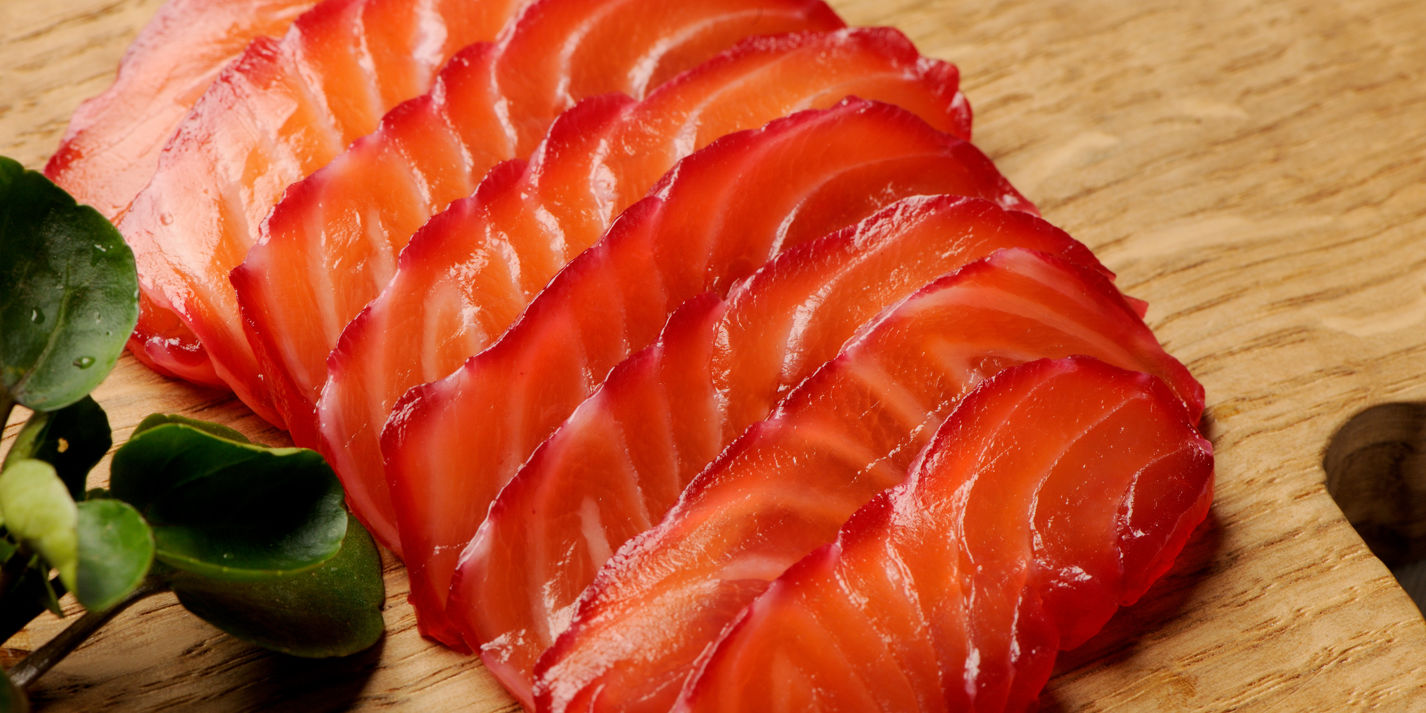
Salmon is a popular and highly nutritious type of fish that is known for its distinctive flavor and rich texture. Whether you enjoy it grilled, baked, or smoked, salmon is a versatile protein that can be incorporated into a wide range of dishes. But there is so much more to this remarkable fish than meets the eye. In this article, we’ll dive deep into the world of salmon and uncover 19 interesting facts that you may not have known. From its life cycle to its health benefits, we’ll explore the fascinating aspects of this beloved seafood. So, get ready to expand your knowledge and discover why salmon is not only delicious but also an important part of marine ecosystems and a valuable source of nutrition. Let’s jump right in and explore the hidden secrets of salmon!
Key Takeaways:
- Salmon are incredible fish that migrate, change color, and have a strong sense of taste. They play a vital role in the ecosystem and are a popular choice in many cuisines worldwide.
- Salmon are not only delicious but also important to indigenous cultures. However, they face threats like habitat destruction and overfishing, making their survival a significant concern.
Salmon are migratory fish.
Salmon are known for their incredible migration journeys, swimming upstream from the ocean to their freshwater spawning grounds.
There are different species of salmon.
The most popular species of salmon include Chinook, Sockeye, Coho, Pink, and Atlantic salmon.
Salmon are a great source of omega-3 fatty acids.
They contain high levels of omega-3 fatty acids, which are essential for maintaining good cardiovascular health.
Salmon can change their color.
When they migrate from saltwater to freshwater, their skin can change from silver to a vibrant red or pink hue.
They have a keen sense of smell.
Salmon have an incredible sense of smell, allowing them to navigate back to their birthplace to spawn.
Salmon can jump over 7 feet high.
During their migration journey, salmon can leap great heights to overcome obstacles such as waterfalls and rapids.
They can lay thousands of eggs.
Female salmon can lay thousands of eggs in nests called “redds,” which they construct in riverbeds.
Salmon eggs are called “roe.”
Roe is highly prized in many cuisines and is commonly used in dishes such as sushi and caviar.
They have a complex life cycle.
Salmon go through several stages of development, including eggs, alevins, fry, smolt, and adults.
Salmon have a strong fighting spirit.
When caught by anglers, salmon are known for their energetic and acrobatic fights, making them a popular sport fish.
Salmon are an important keystone species.
They play a vital role in the ecosystem, as their nutrient-rich carcasses provide food for various other animals and plants.
Salmon can live in both saltwater and freshwater.
They start their lives in freshwater, then migrate to the ocean, and eventually return to freshwater to spawn.
They have a unique sense of taste.
Salmon have taste buds in their mouths, on their lips, and even on their gills, allowing them to detect different flavors in the water.
Salmon can grow to impressive sizes.
The largest recorded Chinook salmon weighed over 100 pounds, while other species can reach lengths of more than 3 feet.
Salmon are a popular culinary choice worldwide.
From grilled and baked dishes to sushi and sashimi, salmon is enjoyed in a wide variety of delicious preparations across different cuisines.
They play a significant role in indigenous cultures.
For many indigenous peoples, salmon has spiritual, cultural, and economic importance, representing a connection to their ancestral lands and traditions.
Salmon have a short lifespan.
Depending on the species, salmon typically live for about three to seven years.
They are highly prized for their nutritional value.
Salmon is packed with nutrients such as protein, vitamins, and minerals, making it a healthy choice for a well-balanced diet.
Salmon face numerous threats.
Habitat destruction, overfishing, pollution, and climate change all pose significant challenges to salmon populations and their survival.
Salmon are fascinating creatures, with their remarkable migration journeys, nutritional value, and cultural significance. Whether enjoyed on a plate or admired in the wild, these 19 facts about salmon highlight the importance and uniqueness of these remarkable fish.
Conclusion
Salmon is not only a delicious and versatile fish, but it also holds a wealth of interesting facts. Whether you’re a seafood lover or simply curious about this popular fish, learning about its nutritional value, life cycle, and conservation efforts can enhance your appreciation for it. From its vibrant pink flesh to its ability to swim upstream, salmon continues to captivate both chefs and nature enthusiasts alike.
FAQs
Q: What makes salmon a healthy food choice?
A: Salmon is rich in omega-3 fatty acids, which are essential for brain health, heart health, and reducing inflammation in the body. It is also a great source of protein, vitamins B12 and D, and minerals such as selenium and iodine.
Q: How is salmon classified?
A: Salmon belongs to the family Salmonidae, which includes several species native to both the Atlantic and Pacific Oceans. The most common species are Atlantic salmon and Pacific salmon, which further includes varieties like Chinook, Coho, Sockeye, and Pink salmon.
Q: How long is the typical life cycle of a salmon?
A: Salmon have a complex life cycle that includes spawning in freshwater rivers or streams, migrating to the ocean to grow and mature, and then returning to their birthplace to reproduce. This cycle takes approximately three to five years, depending on the species.
Q: Are all salmon wild-caught?
A: No, not all salmon are wild-caught. With the increasing demand for salmon, there has been a rise in salmon farming or aquaculture. Farmed salmon now accounts for a significant portion of salmon consumption globally.
Q: How can I tell if salmon is fresh?
A: When purchasing salmon, look for firm flesh with a vibrant pink or orange color. The fish should have a mild, oceanic smell, and the skin should be shiny and intact. Additionally, check for any signs of discoloration, sliminess, or foul odor, as these can indicate that the salmon is no longer fresh.
Q: What are some popular ways to cook salmon?
A: Salmon can be prepared in numerous ways, including grilling, baking, poaching, or pan-searing. It can be seasoned with herbs and spices, marinated, or served with various sauces. Some popular dishes include grilled salmon with lemon and dill, teriyaki salmon, and salmon cakes.
Q: Is salmon safe for pregnant women to consume?
A: Yes, salmon is generally considered safe for pregnant women to consume as it is a rich source of omega-3 fatty acids and other essential nutrients. However, it is recommended to limit the intake of large predatory fish, such as king mackerel or shark, due to potential mercury contamination.
Salmon's incredible journey doesn't end here. Dive deeper into the world of this remarkable fish by exploring surprising facts about actor Colin Salmon, astounding details about baseball player Tim Salmon, and uncover the nutritional benefits of salmon skin. Continue your adventure and satisfy your curiosity with these captivating reads.
Was this page helpful?
Our commitment to delivering trustworthy and engaging content is at the heart of what we do. Each fact on our site is contributed by real users like you, bringing a wealth of diverse insights and information. To ensure the highest standards of accuracy and reliability, our dedicated editors meticulously review each submission. This process guarantees that the facts we share are not only fascinating but also credible. Trust in our commitment to quality and authenticity as you explore and learn with us.


